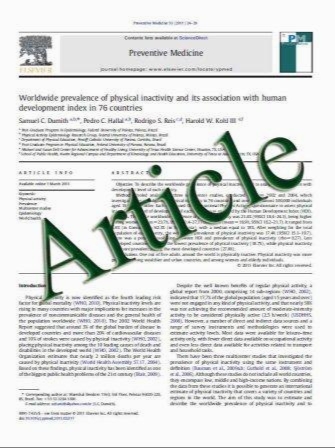European multicenter study of natural family planning (1989^1995): e¤cacy and drop-out
- نوع فایل : کتاب
- زبان : انگلیسی
- مؤلف : THE EUROPEAN NATURAL FAMILY PLANNING STUDY GROUPS
- چاپ و سال / کشور: 1999
Description
Background: E¡ectiveness studies in natural family planning (NFP) published over the past 20 years have shown a wide range of contraceptive e¤cacy and acceptability. This seems to be due in part to di¡erent NFP methodologies. Consequently, we decided to carry out an e¡ectiveness study in Europe to examine one group of the most widely spread NFP methods, the sympto- thermal methods. Methods: Between 1989 and 1995, 15 NFP groups from 10 European countries participated in a prospective European multicentre study. This paper reports on l328 women aged between 19 and 45 years and willing to participate for at least 12 cycles. Two types of symptothermal methods were mainly used, the symptothermal double-check methods (1046 women, 16 865 cycles of exposure, 34 unintended pregnancies) and the symptothermal single-check methods (214 women, 1495 cycles of exposure, 13 unintended pregnancies). The study was an observational study with prospectively collected data. The pregnancy rates, drop-out rates and lost-to-follow-up rates are presented separately for both subgroups according to the Kaplan^Meier method. Results: For the double-check methods, there was an unintended pregnancy rate of 2.6% at the end of the ¢rst 12 cycles of use (standard error or SE 0.55%), a drop-out rate for di¤culties or dissatisfaction of 3.9% (SE 0.69%) and a lost- to-follow-up rate of 3.l% (SE 0.62%). In the single-check group, there was a total of 13 unintended pregnancies at the end of the ¢rst 12 cycles of studyparticipation, giving an unintended pregnancy rate of 8.5% (SE 2.52%), a drop- out rate for di¤culties or dissatisfaction of 3.0% (SE 1.76%) and a lost-to- follow-up rate of 23.4% (SE 4.35%). No pregnancy was observed in women over 40 years of age. Most pregnancies occurred because of deliberate unprotected intercourse in the fertile phase (`user failure'). Conclusions: The symptothermal double-check methods have proved to be e،ective family planning methods in Europe. The low drop-out-rate for di¤culties or dissatisfaction with NFP shows the good acceptability.
Advances in Contraception, 1999; 15: 69^83. #1999Kluwer Academic Publishers. Printed in theNetherlands


